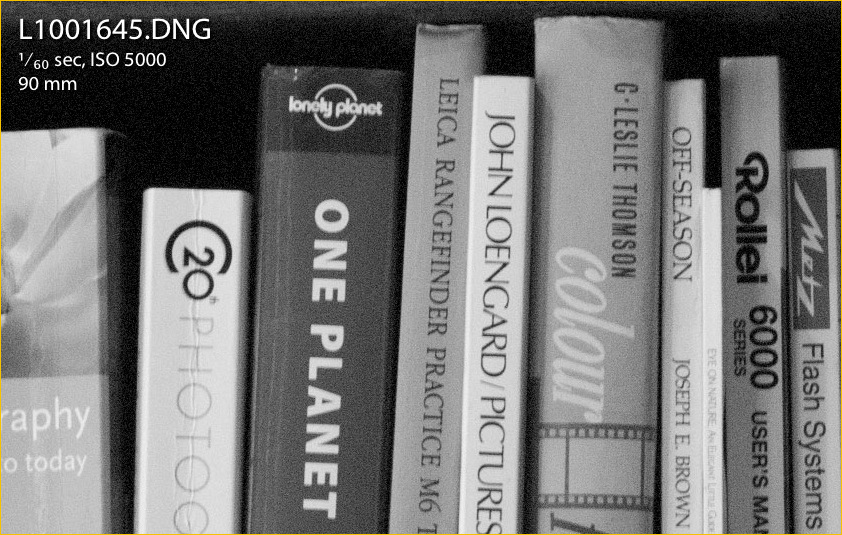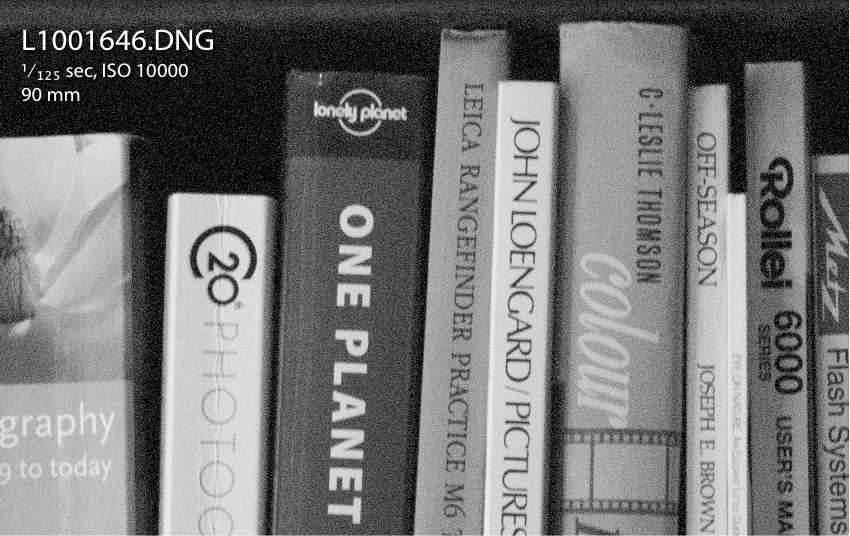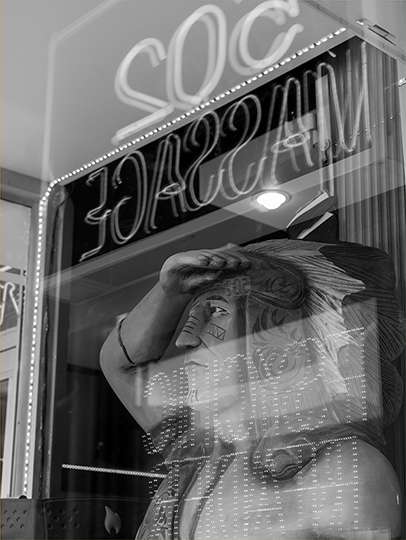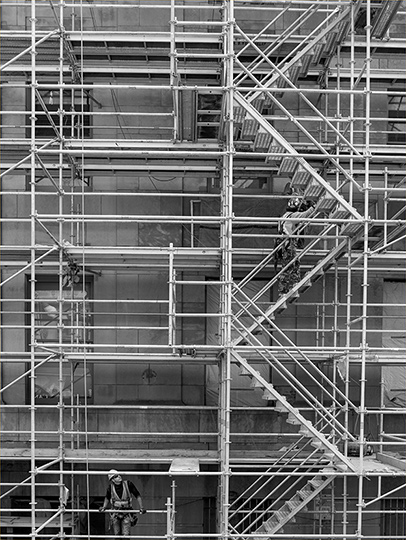
Shooting with a LEICA is like a long tender kiss, like firing an automatic pistol, like an hour on the analyist’s couch.
Henri Cartier Bresson
On May 10, 2012, in Berlin, Germany Leica announced theM Monochrom. I was there for the launch event, along with hundreds of invited journalists and guests from around the world. I had a bit of a head start though because I’d received a pre-production camera for testing about 10 days before. Though that time had been filled with teaching a two day printing seminar followed by a two day wildlife field workshop (and obviously I couldn’t let anyone see the new camera), I did manage to spend enough time shooting with Henri to garner some initial impressions.
– Henri was the camera’s project name prior to launch; named afteryou know who.
– Note that the camera is actually called theM Monochrom, not theM9 Monochrome. Though it is based on theLeica M9body, there is no 9 in the name, andMonocromis spelled the German way, without an “e” at the end.
– From now on I’ll usually refer to the camera in this report as theMM, for brevity.
Pricing and Availability
The U.S. list price will be $7,950, €6.800 in Europe. Shipments will begin in August.
Yes, the M Monochrom is about a thousand more than the M9. Engineering a monochrome sensor equipped camera isn’t simply a matter of removing the Bayer array. Though based on the M9 sensor, a significant amount of reengineering at the chip level was required.
What is it, and Who is it For?
M Leicas are a niche product. Ignoring collectors for the moment, these cameras are for people who understand and appreciate the gestalt of rangefinder shooting. A digital M Leica is also old school, though havingdigitalandold schoolin the same sentance may at first seem an oxymoron. Prime lenses, manual aperture ring and shutter speed dial, and little else. Just what you need and little more. But the Leica Monochrom is evenolder school because it hearkens back to the days of shooting B&W film. Put the two together and you have a niche product within a niche.
Poo Poo
Let’s get thepoo pooingout of the way first. A lot of people simply are not going to get it.“It”being the need for an expensive digital M Leica that only shoots in B&W. That’s OK. This camera then is simply not for you. So lighten up, and recognize that there are people for whom the rangefinder ethos and the monochrome aesthetic is a passion and a calling. There’s nothing elitist going on, just a different mindset and sensibility than yours.
Frankly, it’s going to be depressing to read some of the online forums over the next few weeks, where self-proclaimed experts are going to question theraison d’etreof the M Monochrom. So be it. But, as we’ll soon see, thereissomething special going on with this new Leica, and so if developments in the state of imaging technology interest you, though an MM may not be in your future, read on.
On The Lookout. Toronto, May 2012
Leica M Monochrom with Tri-Elmar @ 50mm @ ISO 320
Body Aesthetics
With the MM Leica has carried minimalism to its highest order. This camera is black only, and has no logos. No red dot, no Leica script, nothing except the words Leica Camera Made in Germany on the rear panel above the LCD, as on the M9. The front and top panels are bereft of text, logos or ID symbols. This is visually a minimalist stealth camera.
Otherwise, for better or for worse, it is a Leica M9 in just about every respect. The sensor is different from that of the M9, base ISO is now 320 and top ISO is 10,000, there are image toning modes, JPG basic has been removed, there is no compressed DNG, and in a first on any camera there is now a RAW data histogram during review. Lightroom 4.1 already supports the MM andSilver Efex Prois included with the camera.
A First
To my knowledge the M Monochrome is the first 35mm format monochrome camera.Phase Onemade a limited production medium format back called theAchromatic Plus a few years ago , based on the P45+, but at well over USD $40,000 for the back alone it was mainly used in scientific applications. (I do know at least a couple of fine art photographers who use it for landscape work though).
For the sake of historical accuracy,Kodakmade a monochrome DSLR named the760Min 2004, but only a handful were ever built and it was never commercialized. Sadly; typical Kodak. You can reada review of the 760Mdone byPete Meyershere in this site.
So the MM really is something of a first. But what are the implications, and what are the results?
Bye Bye Bayer

It’s a bit of a misnomer to consider the M Monochrom among the first monochrome sensor cameras. This is because all camera sensors are in fact monochrome devices. The way that we obtain colour is via a filter layer placed over the sensor called aBayer Array. (Foveon sensors excluded, of course). A typical Bayer pattern has half of the cells covered with green filters and the remaining half either red or blue. The green filtered cells are responsible for luminance information and the red and blue predominantly for colour information, which when combined with the green allows for full colour images to be derived. Seems like it wouldn’t work all that well, but indeed it does, and virtually every one of the hundreds of millions of digital cameras in the world, from your cell phone to an $40,000 medium format back works this way.
But, the technology is not without ot flaws. Among these is that since the luminance information is only being sampled from the green cells, there is actually less resolution available than one might think. About 2/3rds in fact.
Update:I have been called to task for writing above that “luminance information is only being sampled from the green cells“. Fair enough. I did write “the red and bluepredominantlyfor colour information” in the sentance immediately prior, but neglected to be as precise further on. Mea Culpa.
This is an argument in favour of Foveon technology, where the colour filter layers are stacked vertically, and every cell is responsible luminance information. Foveon is not without its own problems in terms of colour reproduction accuracy, but that’s beyond the scope of this review. (Also, Foveon supporters claim 3X resolution, but that’s a red herring. The inherent resolution advantage over a Bayer technology sensor is only about 1/3rd).
Now we can understand what Leica has accomplished by creating a monochrome sensor equipped camera. The red and blue cells in a Bayer camera are used to primarily derive colour information while in the MM all pixels are used solely for luminance information, and therefore the sensor has greater resolution than an equivalent color sensor. In that regard the MM’s resolution is at least equivalent to 24 Megapixels in a Bayer camera, other factors excluded.
But, there’s more going on. To create a colour image a Bayer sensor is, in fact, “guessing”; or interpolating between the various cells to recreate a colour rendition. As a consequence, down at the pixel level there is a “fudging” going on. This is what leads to the possibility of colour moire, when an interference pattern occurs between the Bayer array and very fine patterns in the real world (fabrics, bird feathers, etc). Even when you later take away colour in post processing there are still interference artifacts remaining.
The Leica Monochrom M has none of these issues, because there is no Bayer array. Therefore actual resolution is higher that a Bayer sensor with the same number of pixels, and there is no possibility of either colour moire or related artifacting.
Unreal Tush. Toronto, May 2012
Leica M Monochrom with Tri-Elmar @ 50mm @ ISO 320
Raw Histogram
In what is likely a first for the industry, the MM displays a true histogram of the raw file. When it first appears (there are 4 different image review screens, two of them with a histogram) the histogram is based on the internal JPG. But, after a moment the histogram corrects itself with the actual raw data.
This has not been possible till now because with the raw file from a colour capable sensor the white balance is indeterminate. Depending on how the raw file is subsequently processed one of more of the colour channels might be blown. But because the MM has no white balance a true raw histogram display is possible. When this is combined with blinking highlight and shadow warnings, which have user settable response points, post exposure exposure confirmation is highly accurate.
In flip side of shooting without a Bayer array is that while it allows for a true raw histogram and increased resolution, exposure becomes a bit trickier. In a colour raw file unless all three channels are completely blown it’s possible to salvage something from the one or two colour channels that may not be clipped. But there are no separate channels on the MM, so once clipped, there’s nowhere to turn.
Noise

Below are 100% crops of the above frame at each available full stop ISO setting. Please note that base ISO on the Monochrom M is ISO 320. ISO 160 is therefore a “pull”, with reduced dynamic range. Also, the examplws below are raws right from of the camera’s DNG files, without any sharpening.







Noise isn’t just about the fact that it may be there to some degree at a given ISO. It’s about what the noise pattern looks like; its texture in other words. Back in the day (the film days, that is) we knew that the choice of developer lead to differences in accutance (sharpness) as well as grain (noise). You could have one or the other when shooting high ASA emulsions, but not high accutance and low grain at the same time.
We now can shoot at speeds that were just a fantasy more than 10 years ago, but noise is still a reality. On the Leica MM noise starts to appear at about ISO 2,500, but ISO 5,000 is still eminently usable. It isn’t until ISO 10,000 that it becomes an issue, and even then its very tight pattern is such that prints look quite acceptable at that speed.
Resolution
Climbing Higher. Toronto, May 2012
Leica M Monochrom with Tri-Elmar @ 50mm @ ISO 320
It didn’t take more than a day of real-world shooting to realize that the resolution of the MM is something special. I am confident in saying that the MM’s 18 Megapixel sensor performs more like a 26–32 MP Bayer sensor camera. This was borne out in the real world when I made my first large print on an Epson 9800. It was about a 26 X32 inch print and the native resolution was well under 140 PPI. But I ressed it up to 360 PPI in Lightroom 4, and the resulting print was remarkable. It was really difficult to differentiate between it and prints that I was making at the same time taken with the 36 MegapixelNikon D800E. In other words, numbers don’t tell the whole story (humm…I think I’ve written this before), and thus the new Leica MM definitely punches above its weight category. The lack of an AA filter in combination with the additional resolution provided by havingallof the pixels contribute to luminance resolution is what makes the difference.
Any Colour You Want, as Long as It’s Gray
As appealing as the MM may be to some, it needs to be borne in mind that the camera only shoots in B&W. So if you’ve walked out the door with just the MM, and later find yourself faced with a great colour image opportunity, well, you’re kind of out of luck. Of course if you’re shooting an M9, you can choose which rendition you prefer. The M9 though doesn’t give you the special image qualities that the MM does, so that’s the trade off.
Some photographers will find just being able to shoot monochrome creatively invigorating; others aesthetically restrictive. As always in a creative pursuit, it comes down to individual taste and needs.
You can, of course, use colour filters on the camera; a yellow, red, green etc, to accentuate colour tonal relationships, just like the old days. Except that when I got the MM I visited a half dozen camera stores in Toronto looking for 49mm colour filters and not a single shop had any, and most said that it has been several years since anyone had asked for them. The major online retailers still sell them though.
And, in a final note on tonal rendition, in a discussion with Leica engineers I was told that the M Monochrom is very close to panchromatic in its native response, but that a light yellow filter will bring it even closer to that goal if desired.
What Else?
Because the M Monochrom is at its heart an M9, except with a monochrome sensor, there isn’t much else that’s different about it. If you are an M shooter you can simply pick up an MM and start working. Operational differences include…
– base ISO of 320
– no Basic JPG
– no compressed DNG mode
– settable shadow (0 to 5%) and highlight (95-100%) clipping indicators
– a toning modes for JPGs (Sepia, Cool and Selenium) each with a "weak" and a "strong" setting, as well of course as OFF.
– DNG raw files compatible with Lightroom 4.1
– Silver Efex Pro software included
In Summary
Everything that you love about the M9 is there in the M Monochrom. Everything that annoys you about the M9 is also there in the M Monochrom – the same lethargic write speeds, the same low resolution LCD, and so forth.
Of course, you lose the ability to shoot in colour, but you gain a significant increase in actual resolution, noticeably better high ISO capability, and the discipline that visualizing and shooting in monochrome provides.Old school photography at its best.
Somehow, I think that Henri himself would approve, don’t you?
You can read a more in-depth review of the
Leica M Monochrom at
ReidReviews
May, 2012
Read this story and all the best stories on The Luminous Landscape
The author has made this story available to Luminous Landscape members only. Upgrade to get instant access to this story and other benefits available only to members.
Why choose us?
Luminous-Landscape is a membership site. Our website contains over 5300 articles on almost every topic, camera, lens and printer you can imagine. Our membership model is simple, just $2 a month ($24.00 USD a year). This $24 gains you access to a wealth of information including all our past and future video tutorials on such topics as Lightroom, Capture One, Printing, file management and dozens of interviews and travel videos.
- New Articles every few days
- All original content found nowhere else on the web
- No Pop Up Google Sense ads – Our advertisers are photo related
- Download/stream video to any device
- NEW videos monthly
- Top well-known photographer contributors
- Posts from industry leaders
- Speciality Photography Workshops
- Mobile device scalable
- Exclusive video interviews
- Special vendor offers for members
- Hands On Product reviews
- FREE – User Forum. One of the most read user forums on the internet
- Access to our community Buy and Sell pages; for members only.

















